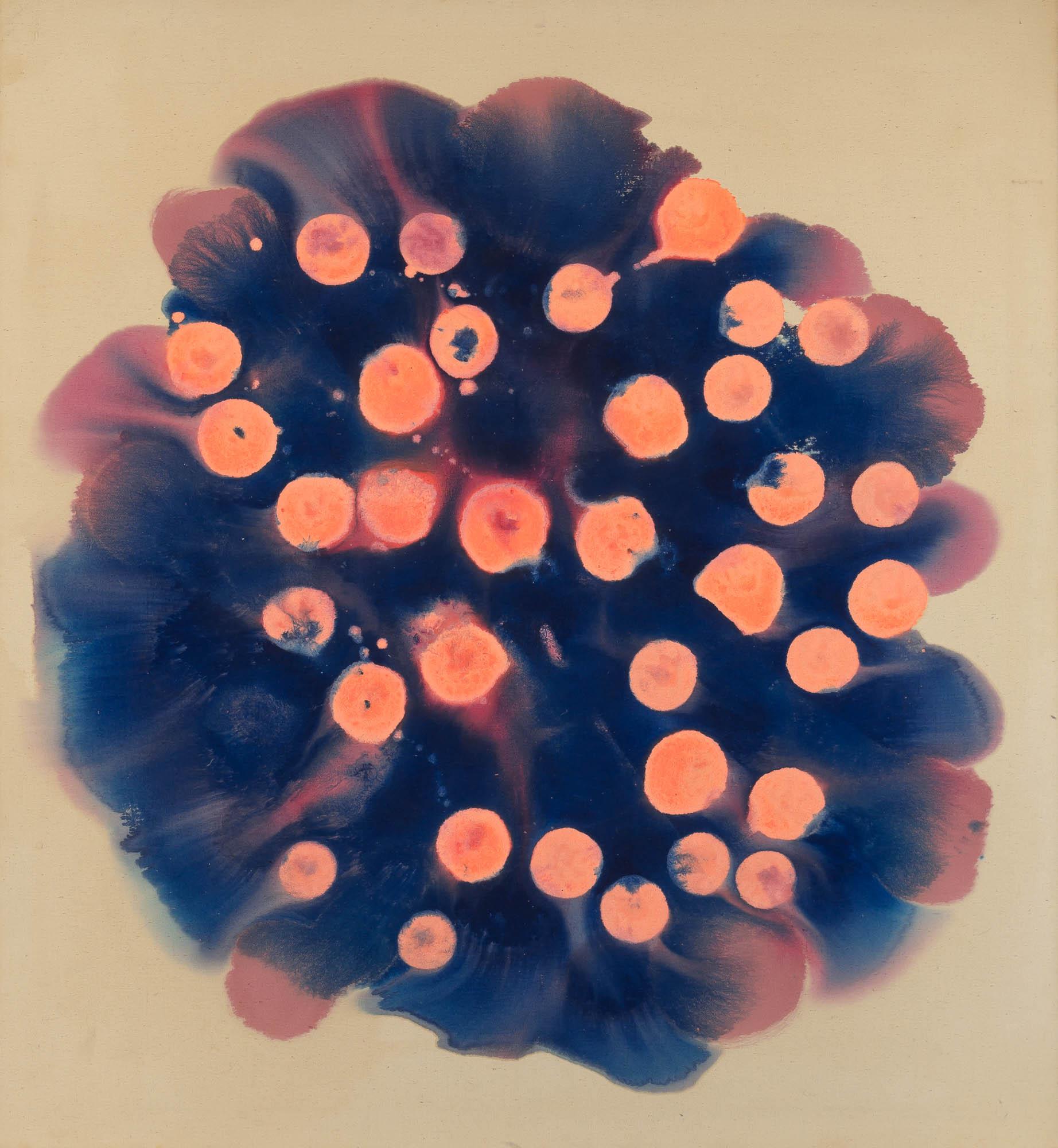
Kenneth Victor Young
American, 1933-2017
Kenneth Victor Young was an American modernist known for his vibrant, abstract compositions. Born in Louisville, Kentucky, and based in Washington, D.C., Young developed a distinct visual language grounded in color theory, geometry, and the physical properties of paint. After early studies in physics and design, he joined the Smithsonian Institution, where he worked for over three decades as an international exhibition designer.
Young’s use of diluted acrylics on raw canvas created surfaces marked by floating orbs and layered color fields. In 1973–74, he had a solo exhibition at the Corcoran Gallery of Art, and his 1969 painting Red Dance is now in the National Gallery of Art’s permanent collection. During his tenure at the Smithsonian he also worked for the United States Information Agency, mounting exhibitions abroad in countries such as Egypt, Italy, and throughout Africa, which influenced his global visual sensibility. He is often counted among the later generation of the Washington Color School, joining peers like Tom Downing and Howard Mehring in exploring stained canvas, color washes, and atmospheric abstraction.
He taught at both the Duke Ellington School and the Corcoran School of Art, contributing to D.C.’s art education landscape. His work continues to be recognized for its role in the evolution of American abstraction during the mid‑to‑late 20th century.
